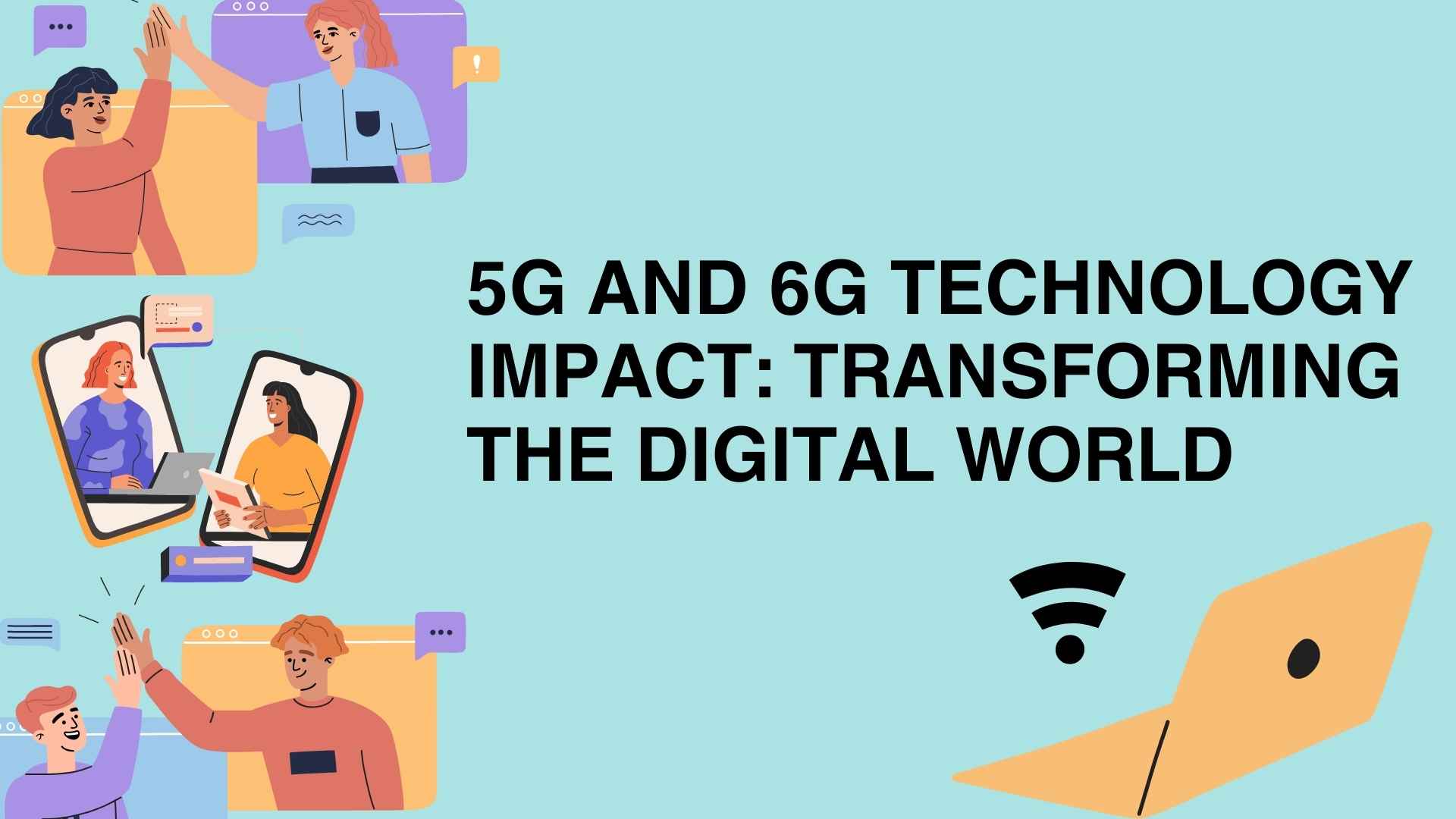The evolution of mobile network technology has significantly shaped modern communication, connectivity, and the digital economy. With the rapid adoption of 5G and the ongoing research into 6G, the world is on the brink of another technological revolution. These next-generation wireless technologies promise faster speeds, lower latency, and enhanced capabilities, transforming industries and improving daily life. This article explores the impact of 5G and 6G technology on various sectors and what the future holds for global connectivity.
Understanding 5G Technology
5G, or the fifth-generation wireless network, is designed to provide ultra-fast internet speeds, minimal latency, and greater network capacity. Unlike its predecessor, 4G LTE, 5G operates on three spectrum bands: low-band, mid-band, and high-band (millimeter wave). This ensures seamless connectivity and supports advanced applications such as IoT (Internet of Things), autonomous vehicles, and smart cities.
Key Benefits of 5G:
- Faster Data Speeds – 5G offers speeds up to 10 Gbps, significantly improving data transfer and streaming quality.
- Low Latency – With a latency of less than 1 millisecond, 5G enhances real-time applications like gaming and remote surgeries.
- Massive Connectivity – It supports billions of IoT devices, enabling smart infrastructure and automation.
- Enhanced Reliability – 5G networks ensure a stable connection, reducing network congestion.
- Improved Energy Efficiency – Optimized power consumption makes 5G more sustainable.
Impact of 5G Technology
1. Telecommunications and Connectivity
5G is revolutionizing communication by enabling high-definition video calls, seamless virtual meetings, and faster data-sharing. Telecom providers are upgrading their infrastructure to accommodate 5G networks, ensuring better connectivity worldwide.
2. Smart Cities and Infrastructure
5G plays a crucial role in smart city development by supporting intelligent traffic management, automated lighting, and efficient public services. Sensors and IoT devices powered by 5G enhance urban living conditions, making cities more sustainable and efficient.
3. Healthcare Advancements
With 5G, remote healthcare services are improving rapidly. Doctors can perform remote surgeries using robotic systems, and patients can access real-time monitoring through wearable devices. 5G ensures reliable connectivity for telemedicine and emergency response systems.
4. Industrial Automation and Manufacturing
The industrial sector benefits from 5G by enabling automated factories and real-time monitoring. Robotics, AI-driven systems, and predictive maintenance powered by 5G are enhancing efficiency and productivity in manufacturing.
5. Entertainment and Gaming
The entertainment industry is experiencing a shift with 5G, as it supports high-quality streaming, augmented reality (AR), and virtual reality (VR) applications. Gamers enjoy ultra-low latency, ensuring a seamless gaming experience.
The Future: 6G Technology
While 5G is still being deployed globally, research and development for 6G (sixth-generation wireless technology) have already begun. Expected to launch around 2030, 6G aims to take connectivity to an entirely new level with speeds exceeding 100 Gbps and ultra-low latency.
Key Features of 6G:
- Terahertz (THz) Frequency Bands – 6G will operate on higher frequency bands, allowing faster data transmission.
- Artificial Intelligence (AI) Integration – AI-driven networks will enhance automation and decision-making.
- Holographic Communication – Real-time holographic meetings will replace traditional video calls.
- Quantum Communication – 6G aims to improve security through quantum encryption.
- Full IoT Integration – Every device, from smart homes to autonomous cars, will be seamlessly interconnected.
Potential Impact of 6G
1. Enhanced Global Connectivity
6G will bridge the digital divide by providing high-speed internet access to remote areas. It will enable real-time communication on a global scale without connectivity issues.
2. Revolutionary Healthcare Applications
With 6G, AI-driven healthcare systems will perform predictive diagnostics, and robotic surgeries will become more advanced. Remote patient monitoring will reach new heights, reducing hospital congestion.
3. Advanced Smart Cities
6G will power fully automated smart cities, with AI-driven traffic systems, energy-efficient buildings, and intelligent infrastructure for a sustainable future.
4. Space Communication
6G will enhance satellite communications, enabling deep-space exploration and interplanetary internet. Scientists predict that 6G networks will support space missions with real-time data transmission.
5. Seamless Human-Machine Interaction
With AI and neural interfaces, 6G will enable direct brain-to-device communication, revolutionizing how humans interact with technology. Augmented reality will merge with reality, creating futuristic work and entertainment experiences.
Challenges and Concerns
Despite the benefits, the development of 5G and 6G faces several challenges:
- Infrastructure Costs – Deploying new networks requires significant investment in infrastructure and hardware.
- Security Risks – Advanced networks introduce cybersecurity concerns, including data breaches and hacking threats.
- Regulatory Issues – Governments must establish policies to ensure fair use and prevent misuse of high-speed networks.
- Health Concerns – Some debates surround the potential health risks of high-frequency radiation, though scientific evidence remains inconclusive.
Conclusion
5G and 6G technologies are set to redefine how we live, work, and communicate. While 5G is already transforming industries with its speed and reliability, 6G promises an even more futuristic world driven by AI, quantum computing, and ultra-fast connectivity. As we move forward, innovation and strategic planning will be crucial to harnessing the full potential of these advanced technologies for a smarter, more connected future.
